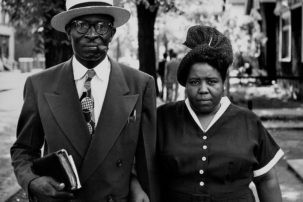MA in Art History; Independent Curator and Writer (Dubé-Moreau)/Graduate of Medicine; NFL Player; Philanthropist (Duvernay-Tardif)
Location: Montreal
Started Collecting: 2012
First artwork actively acquired: Mathieu Beauséjour, No Dollars!, 2010
We started collecting together eight years ago. The first piece we acquired was a small multiple by Mathieu Beauséjour. Ironically, perhaps, it’s a piece about money and capitalism…it’s basically a dollar bill that says “No Dollar” on it. Art is one of the only things that resists this idea of savage capitalism in some way, and that piece still really resonates in our approach to collecting. We don’t collect as an investment. If there’s any return that we’re interested in, it is to see the artists grow and see their works placed in different collections or museums. That’s the seal of acknowledgement for the artist that we’re looking for and want to support.
Right now, our collecting guidelines are media- and gender-oriented. So we try to have, let’s say, a third of sculptures, a third of paintings and a third of photos. We want to have 50/50 men and women, and cultural diversity is very important in the artists we choose. We started with really limited financial means; now we’ve been able to put a little more resources into the collection. Every year we try to set up a budget, which is difficult to do because we keep busting it. And since we split our time between Kansas City and Montreal, we just bounce different artists off each other, different images…it’s kind of our long-distance project as a couple.





